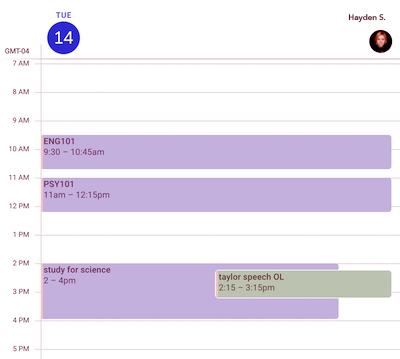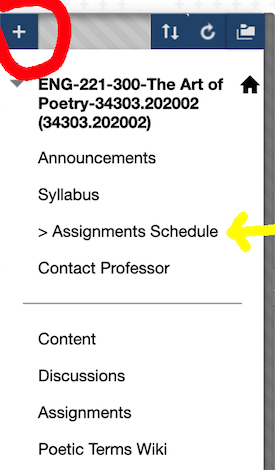| |
 |
| |
Helping students work on their self-regulation, organization and literacy skills can improve students' chances of successfully completing their suddenly online courses. Let's do all we can to help them earn the credits they set out to earn at the start of the semester. (graphic by Cynthia Eaton) |
| |
|
Dr. Maria Van Kerkhove, a World Health Organization epidemiologist, spoke out against “social distancing” in a March 20 press briefing.
“We’re changing to say physical distance and that's on purpose because we want people to still remain connected… because your mental health going through this is just as important as your physical health,” Van Kerkhove explained.
While physically distant from students, it becomes even more important that we support the whole learner. To this end, I offer some techniques to consider when teaching, advising, tutoring, counseling and supporting our students through this challenge.
General help from the FA
First, you may already know that the FA has posted several pages of resources on our website. This includes some Blackboard Basics help files for both faculty and students (you’re encouraged to download the student files, edit and share with your own students), library resources and general remote teaching/working resources (with some advice for your physical and mental health as well as for using video conferencing programs).
Second, you should know that you aren’t the only source of tech support for your students. For Blackboard specific issues, students should contact the Open SUNY help desk or call toll free 1-844-OPEN-SUN. For SCCC specific issues, students should use the ETU Chat (click the three dots at lower right, then Start Chat).
Two ways learning online differs from on campus
Having taught online since 1998 and served on college distance education committees for most of that time, I’ve long heard people argue that there is really no difference between on-campus education and distance education. If something can be taught on campus, these individuals posit, it can also be done online and there’s no difference.
I do not agree. In my estimation, two major things make a critical difference between learning online and learning on campus: literacy and self-regulation.
- Literacy — The vast majority of online courses still rely more heavily on text, which means there’s a greater weight on students’ literacy skills—their reading and writing skills—to succeed compared with on campus, where their listening and speaking skills come into play more.
- Self-regulation — Students on campus are physically in a room with their professors and peers on a regular basis and can hear reminders like, “To prepare for the quiz on Thursday, you should….” So there’s some external structure built in to their lives, just by virtue of needing to be in a space, say, every Tuesday and Thursday from 12:30 to 1:45. Online, students need greater self-regulation skills to succeed.
I’m organizing my advice into these two categories, but of course there’s overlap. And I do not mean to suggest that faculty should do all of the following. You might share ideas with individual students as needed or you might share one each week as a “helpful hint” announcement. Or maybe create a new content page listing any of these you find useful, along with your own helpful hints and tips based on your subject matter or area of focus.
Ideas to help students improve literacy skills
- Explain to students that in an online environment, it’s even more important to read slowly and carefully and to “read with a pen” or otherwise annotate as they read.
It’s best if they can print—presuming they have a printer at home, which not all do. For students who do have a printer:
- Consider typing and posting your materials using the Calibri or Calibri Light font because these use less ink than others (like Arial), but they are still ADA compliant.
- They can use sites like Print Friendly to remove color ads and images from webpages you refer them to.
For students who cannot print, they can annotate online using Adobe Reader for pdfs or the free site hypothes.is for other source types (SCCC is currently exploring integration of hypothes.is into Blackboard at my request for collaborative online group annotations).
While highlighting can be useful for a few highly visual learners, research shows that doing a “descriptive outline” results in greater reading comprehension. A descriptive outline is when students make a brief note in the margin by each paragraph or section by paraphrasing them. Teach students to summarize “what is the author saying or doing right here?” This forces students to slow down, interact with the text, read more actively which improves focus and note places where they have questions.
Also remind students that they have the power of the internet at their fingertips! They can and should look up unfamiliar words and jot definitions in the margins.
- Give students a new way to reflect on their course readings or their concerns.
When students struggle, it may not be because they didn’t do the reading. Often they do the reading but don’t comprehend it.
One way to address this is to set up journals in Blackboard. It doesn’t take long, it gives students a way self-reflect on your assignments and it gives you a quick peek into their learning. This can be a private ungraded journal, or you can grant a few points per entry to encourage use. You could ask them to summarize the three main points from a lesson or chapter or to identify at least two things they feel confused about. I ask things like, “In this short story, what are two things you’d call a ‘center of gravity’, things that really resonated with you, things you’ll remember long after you forget everything else about this story?”
These are super quick to read and assign points to. More importantly, the very act of writing their responses will aid student comprehension and help clarify for themselves what they do and do not comprehend, which is a basic for increased metacognitive awareness.
Private journals in Blackboard can also be used for students to write out what’s happening in their lives, what they’re concerned about as students, etc. Students typically hate email; they think email—like Facebook—is for “old people.” It feels too formal. Journals work much the same way but tend to get more use from students because it’s not email.
Ideas to help students improve self-regulation skills
- Schedule management matters!
Explicitly advise students that now is the time to build and manage their own schedules—better than they ever have before. Doing so can be calming for students and give them some sense of control.
Students may have electronic planners or calendars that they use, and those may function well, especially if they like to have alarms/reminders set to go off at specific times. There’s also something to be said for planning with pen and paper. This can be a good time to develop a habit of jotting a to-do list on index cards, post-it notes or any scraps of paper. There’s something satisfying about shredding that paper when you’ve completed your list.
As an instructor, you can pull out and highlight the schedule of assignments from your syllabus as its own page right at the top of your course menu. Put what’s due and when right in front of their faces! I put mine right below the syllabus. (To do so: Click the + symbol at the top left of your course menu and select Course Link. Browse to and highlight your schedule of assignments page, name it, check Available to Users and click Submit.)
- Remind them that they can and need to manage their procrastination.
This can be an even bigger challenge when everyone is physically distanced and they understandably have other concerns in their lives. But for some, focusing on their academic work can be a welcome distraction from those concerns.
Advise them to find the quietest space they can at home. If listening to music helps, that’s great. But assure them the research is clear that successful multitasking is largely a myth. To limit distractions, here are some time management websites to share:
- StayFocusd is a free Chrome extension that helps students limit access on time-wasting sites.
- SelfControl is a Mac app that limits time on sites you enter; Windows users can try Freedom.
Teach them to set goals for themselves. They could try the Pomodoro Technique: Every 25 minutes, reward yourself with a very short break. After four “pomodoros,” give yourself a longer break. Make sure at least one involves some form of physical exercise (like a quick ten-minute walk), stretching or meditating.
- Help them defeat “writer’s block.”
As an English professor, I know one thing students often procrastinate is getting started on writing assignments. Boy, do I know that! They’ll call it “writer’s block,” but I think it’s really that they’ve learned to hate writing—because clear, concise, compelling writing is hard work. (I’ve been at this for decades and have yet to figure it out.)
Here’s a trick that often helps my students. When faced with a writing assignment, tell them to try either turning off their monitor or darkening their screen to the point where they cannot see what they’re typing.
Then have them just start typing. Really. Start writing everything they think they know about the topic or want to say in response to the assignment. The draft is going to be messy when they look at it in the light again, but writing is its own heuristic and the best way to get started is simply by getting started.
They’ll have to spend some time cleaning up their messy draft, but that’s a lot better than wasting hours staring mindlessly at a blank screen or starting the essay two hours before it’s due. And students often surprise themselves with how much they do have to say.
I hope you find some of these ideas useful for your students.
As Dr. Van Kerkhove argues, we may be physically distant, but that does not mean we have to be socially distant. We are still not only teachers of content but teachers of students. They have much to learn from us, so let’s continue to help them with their literacy and self-regulation skills to better ensure a successful completion to spring 2020—and beyond.
|

